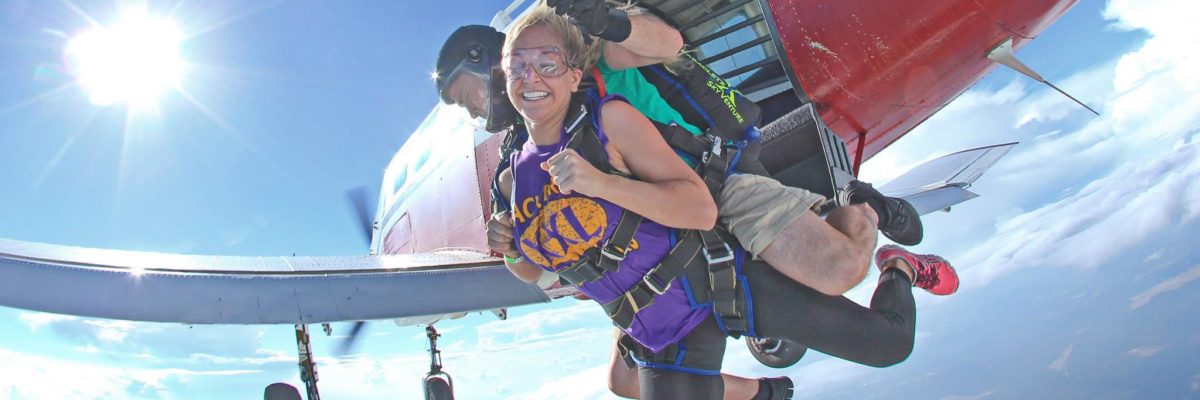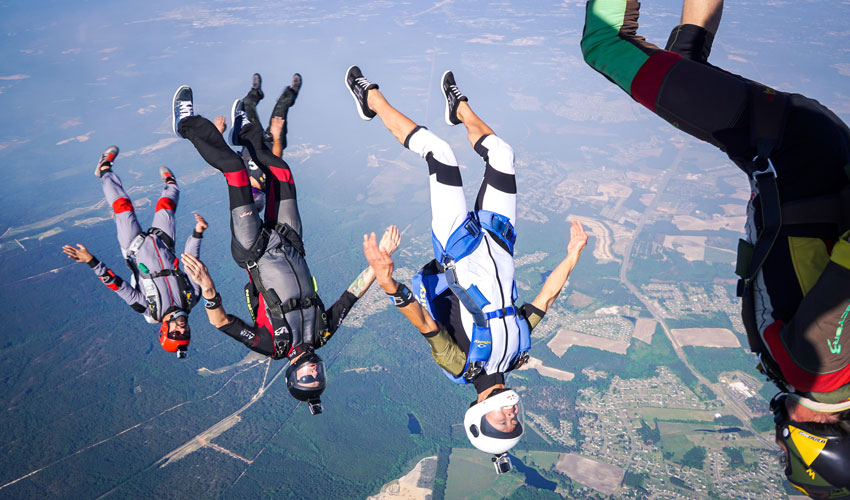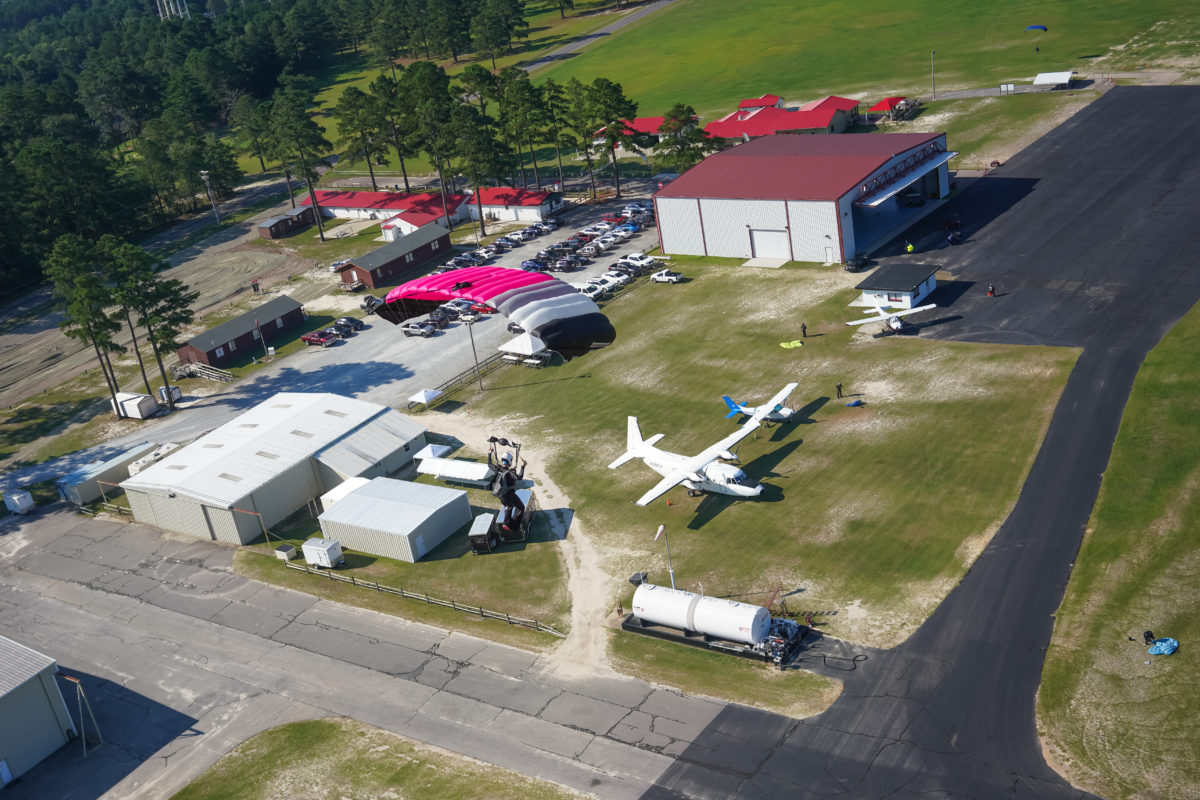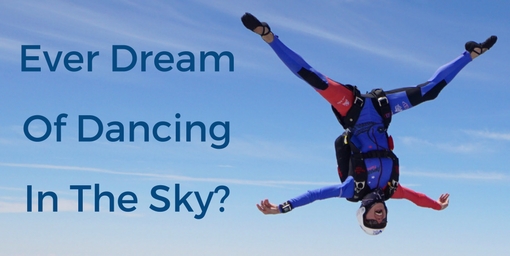
Top 7 Mistakes First Time Skydivers Make (And How To Avoid Them)
Tuesday, June 23, 2020
- Team FlyXP
- 6/23/20
- 0
- Tandem Skydiving
It happens. We’re human. We all make mistakes. When it comes to skydiving, one of the greatest experiences on earth short of going to the moon or climbing Mount Everest, it would be ideal to experience it without making mistakes. So we’ll talk about the things you should know so you’re ready for this momentous life experience, the things that help proper preparation prevent poor performance.
Here are some of the things you need to know to ensure the most perfect, wonderful experience at Skydive Paraclete XP.
SELECTING THE RIGHT SKYDIVING CENTER
All restaurants serve food, but no two restaurants are the same. Some are good, some are average and some are terrible. It’s no different with a skydiving center — some are better than others and it’s important for you to select the right one! This leads us to the first two mistakes:
MISTAKE #1: Booking Based on Proximity and Price
The first mistake most first-time jumpers make is booking the closest dropzone with the cheapest price. When it comes to skydiving, less expensive doesn’t mean better! Skydiving has inherent risks, so it’s important to do your research. Just as you wouldn’t look for the cheapest heart surgeon, don’t look for the cheapest skydive. Take it from us: Running a dropzone is really, really expensive and there’s no (right) way to do this cheaply.
Begin your research with online reviews. A great skydiving experience is more than exiting, freefalling, and landing. Starting with a professional skydiving instructor who’s conscious of safety procedures and has a good personality is the perfect decision. Reading the reviews will give you a good sense of how the dropzone and instructors operate. We also recommend visiting the facility in advance to get a sense of the operation’s professionalism and, at the very least, give the skydiving center a call and speak to someone.
Perhaps the best advice you can get comes from skydivers, as they’ll always point you in the right direction. It’s likely one of your friends on Facebook has a friend that skydives; have a chat with that person, too!
MISTAKE #2: Believing all Skydives Are the Same
A skydive will be different at various dropzones based on the type of aircraft and how high it flies. Ask any skydiver and they’ll confirm this little known fact with first-time jumpers. Skydiving from a four-passenger Cessna 182 from 10,000 feet is much different than exiting at 13,500 feet from a 23-passenger Twin Otter — or, if you’re so lucky, a 32-passenger Casa 212!
If you’re considering a tandem skydive with a few friends, the size of the aircraft and volume of staff will determine whether you can jump together. We don’t want to knock the Cessna 182, since it’s a great airplane and is the backbone for skydiving operations around the world, but, if you’re looking for the ultimate skydiving experience, try a Cessna Caravan, Twin Otter, Shorts SkyVan, PAC 750XL or King Air. These skydiving aircraft have turbine engines and reach altitude before others would.
It also may seem counterintuitive, but the best skydives take place from higher altitudes. A 10,000-foot skydive lasts for about 35 seconds. A 13,500-foot skydive is a full minute of bliss that goes by quickly! Almost 95% of skydivers in the world would opt for a higher altitude jump purely because it offers more enjoyment.

PREPARING FOR YOUR SKYDIVE
The next few mistakes come from not being correctly prepared to make a skydive. Everyone has a role to play, and the skydiving process is more than showing up to check-in, sign some paperwork and get on a plane.
MISTAKE #3: Not Eating in Order to Prevent Being Sick
If you’re thinking about skipping breakfast before the skydive to ensure you don’t get sick, you’re making the third mistake. Don’t do it! Not eating anything is going to leave you feeling sick (the irony!). Here’s the deal: When exiting the aircraft, your adrenaline will be pumping and you’ll need to have some blood sugar in the tank to support the surge. If you didn’t eat earlier, then you will not feel so hot when flying.
Most people don’t get sick when skydiving, but it happens to those that don’t eat, overeat or are dehydrated.
MISTAKE #4: Jumping With Sinus Pressure
If you don’t feel well, it’s not a good idea to make a skydive (we’d tell you this even before COVID-19). The major problem to watch for is sinus pressure! Jumping with sinus pressure can be dangerous and can lead to damage in your ears.
When skydiving, the descent rate is 1,000 feet every six seconds — a rapid descent that will put pressure on the ears. This pressure is usually cleared by ‘equalizing’ just as a diver does when swimming into deeper depths. Guests who have a cold or have sinus pressure before making a jump may find it difficult to equalize and be left feeling uncomfortable.
If you have any sinus pressure, you don’t want to make mistake number four as it’s a painful mistake that shouldn’t be taken lightly!
MISTAKE #5: Not Reading The Confirmation E-mail
No one likes to read the small print, or regular print (our confirmation e-mail uses a 12-point font size), but it’s important that you carefully read through everything before arriving at the dropzone. There is nothing worse than being told you can’t jump because you didn’t come prepared. The confirmation e-mail shares exactly what time to arrive, where to arrive, what to bring and what to wear.
Through the years, we’ve had many people not be able to jump because they didn’t meet the weight restrictions or failed to bring a photo ID or didn’t meet the age requirement. It’s important to read through everything as being unprepared could prevent you from making your jump.

ARRIVING AT THE DROPZONE
MISTAKE #6: Being Impatient
We’re going to be a little direct here, but the following is a true statement: How much fun you have will be based on your attitude and that begins with your level of patience. Skydiving is weather dependent and delays happen a lot.
An old skydiver once said, “It’s better to be on the ground wishing you were in the air than in the air wishing you were on the ground.” We subscribe to this piece of wisdom, but being safety conscious can drag your day out at the skydiving center out. The best bet is to mentally prepare to be at the skydiving center for between five and six hours which leads us to:
Mistake #7: Don’t book an event right after your jump
If you’re on a time crunch, it’s always best to book as early as possible. Weather usually starts acting up as the day gets hotter and there’s atmospheric build-up. The best reservation time is the first booking time of the day, as it’s cooler and if there are any weather delays, there won’t be anyone ahead of you that you’ll have to wait for!
We hope this has been informative an answered any questions you had before skydiving! But if you think of any others, please feel free to contact us or review our FAQs page!

Without a doubt my absolute favorite place to be when I'm out of school and off work. I came here after I made a tandem skydive and decided I wanted to learn and did my AFF. The instructors and coaches are wonderful. You WILL learn here. Loved jumping with Michael, Randy and Mike so much. Even if the drive is 2 1/2 hours and I'm licensed now, I'll keep coming back.
Jenna Nicole
Copyright © 2024, Skydive Paraclete XP, All Rights Reserved.
DropZone Web Design & Marketing by Beyond Marketing, LLC